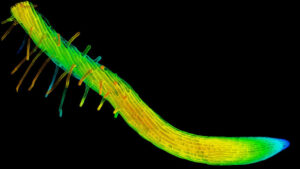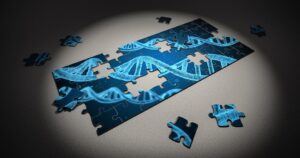
From the bustling streets of sleepless cities to the shadowy depths of tropical forests, societies across the planet rely on intricate cooperation and specialized roles. Among these, the leafcutter ants, Atta cephalotes, exemplify a finely tuned division of labor, where each ant’s role is predetermined by its physical form. However, groundbreaking research from the University of Pennsylvania has revealed that this rigid social structure can be reprogrammed using specific brain molecules.
Led by Shelley Berger, the research team identified two key signaling molecules that can alter the duties of leafcutter ants. The study, published in Cell, highlights the role of Crustacean cardioactive peptide (CCAP) and Neuroparsin-A (NPA) in defining ant behavior. Elevated levels of CCAP in Media ants encourage leaf harvesting, while high NPA levels in Major ants suppress caregiving, favoring defensive tasks. By manipulating these molecules, researchers successfully induced behavioral changes across different ant subcastes.
Unveiling the Genetic Code
The discovery of these molecular switches offers insights into the genetic underpinnings of ant societies. The research draws parallels between the gene-expression patterns in leafcutter ants and eusocial naked mole-rats, suggesting a convergent evolutionary mechanism that dates back over 600 million years. “We were amazed to see the apparent similarity of gene regulation between nurses and foragers of ants compared to naked mole-rat mammals,” Berger noted. This unexpected finding underscores the potential for similar mechanisms in other species, including humans.
Building on previous studies of carpenter ants, which have simpler social structures, the team explored how neuropeptides influence the more complex roles within leafcutter colonies. Using 3D-printed behavioral chambers, they monitored ant interactions with leaves, brood, and fungus, quantifying behavior shifts through video analysis. “Specific neuropeptides are more abundant in certain castes,” explained Karl Glastad, an assistant professor at the University of Rochester and former postdoctoral researcher in Berger’s lab. “By adjusting these levels, we could induce significant behavioral changes.”
Molecular Mechanisms Across Species
The research also delves into the evolutionary implications of these findings, comparing leafcutter ants to naked mole-rats, whose colonies exhibit similar caste-like structures. Despite lacking the exact neuropeptides found in ants, naked mole-rats may share ancient, conserved pathways that govern behavior. “We found substantial overlap in the molecular regulation of foraging and caretaking behaviors,” Glastad remarked, highlighting the potential for cross-species insights.
Moreover, the study uncovers a novel link between neuropeptide signaling and insulin regulation pathways. Insulin-like peptides, prominently expressed alongside NPA, suggest an interplay that could influence behavior. “This connection opens new avenues for research into how insulin might regulate caregiving behaviors in mammals,” said Maxxum Fioriti, a graduate researcher in the Berger Lab. The findings could have implications for understanding disorders like diabetes and their effects on maternal mental health.
Future Directions and Lifespan Plasticity
Looking ahead, Berger’s team is eager to explore the persistence of behavioral plasticity and its relationship to lifespan. They are particularly interested in how reproductive ant queens, who live significantly longer than worker ants, maintain their roles. “Epigenetics offers powerful ways to understand both behavioral and lifespan plasticity,” Berger explained. The team aims to investigate these phenomena further, potentially uncovering insights applicable to mammalian and human biology.
Fioriti also notes the potential for exploring lifespan plasticity in other ant species, where individuals can switch between long-lived queens and short-lived workers. “We’re interested in coupling our understanding of lifespan plasticity between ants and naked mole-rats,” he said, suggesting a broader scope for future research.
This study, supported by various grants and institutions, marks a significant step in unraveling the complexities of social behavior and genetic regulation across species. The findings not only enhance our understanding of ant societies but also pave the way for exploring similar mechanisms in other organisms, offering a glimpse into the evolutionary roots of cooperation and division of labor.





